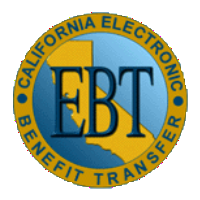State Helps Banks Make Millions off Welfare Recipients

California welfare recipients, who don’t have a lot of slack in their budgets, spend around $25 million a year on financial services related to the Electronic Benefits Transfer (EBT) cards they nearly all use to make transactions.
A study (pdf) by the California Reinvestment Coalition (CRC) found that the 450,000 welfare recipients in 2012, whose average benefit is around $510 a month, pay a total of $19 million annually for ATM fees and charges and another $6.7 million for money orders, check cashing and other services.
The average user is only paying around $5 a month, which doesn’t seem like a whole lot. But many of the recipients pay nothing and many pay a lot more.
The money adds up. The report calculates that a month’s worth of CalWORKS ATM fees statewide would pay for school supplies for 2,349 children. One month of fees in Los Angeles County would cover co-pays for 90,000 prescriptions, and one month fees in Alameda County would pay for 25,532 round-trip bus rides.
Public assistance is delivered to California’s poorest families via the California Work Opportunity and Responsibility to Kids (CalWORKS) program. Although recipients technically have the option of receiving their money through direct deposit, most don’t have bank accounts or the ability to navigate through the bureaucracy to obtain it.
So they deal with banks and Xerox State and Local Solutions Inc., which has a seven-year $69 million contract with the state to manage the EBT program through 2015. EBT users could avoid banks if they had access to MoneyPass ATMs. Xerox contracted with the company to provide services for roughly a third of what banks charge.
But there are only 2,500 MoneyPass ATMs statewide, compared to JPMorgan Chase (4,800) and Bank of America (3,800). Consequently, MoneyPass only gets around 9% of the business.
The EBT system used in California also has a few other drawbacks. There is virtually no protection for users if cards are stolen or lost and the cards don’t facilitate the building of a financial history. Poor people who already have a healthy skepticism of the banking world are further insulated from modern life.
The CRC report proposed that banks and credit unions offer no- and low-fee direct deposit accounts with no minimum balance and built-in overdraft protection. It also suggested that financial institutions should advertise and educate their prospective customers to “help them save money.” The report hopefully opines that:
“Banks should notify the state Department of Social Services and county CalWORKs administrators of their commitment to offering fee–avoidant accounts to CalWORKs recipients and work with those agencies to help recipients gain access to the products.”
Yes, they should. And probably no, they won’t.
So, the CRC is co-sponsoring with the Western Center on Law and Poverty of legislation that would take a little of the caveat emptor out of feeding, clothing and housing the poor.
Assembly Bill 1614 would require that card users receive access to a transaction history and a free 24-hour hotline for reporting lost and stolen cards. It would also replace all-the-market-can-bear fees “with minimal fees or charges, including an opportunity to access benefits with no fee or charges.”
To that end, the bill would require county officials to inform card users of the cheapest way to withdraw benefits. The legislation was introduced last month and has not had a committee hearing yet.
–Ken Broder
To Learn More:
California’s Welfare Recipients Lose Millions in Fees Just to Access Their Benefits (by Bryce Covert, ThinkProgress)
How Big Banks Rake in Millions on the Backs of California's Poorest Families (by Stephanie Mencimer, Mother Jones)
Banks Profit from Fees Paid by California Welfare Recipients (by Chris Megerian, Los Angeles Times)
The $19 Million ATM Fee: How Better Banking Services Would Protect Our Public Investment in Families (by Andrea Luquetta, California Reinvestment Coalition)
- Top Stories
- Controversies
- Where is the Money Going?
- California and the Nation
- Appointments and Resignations
- Unusual News
- Latest News
- California Forbids U.S. Immigration Agents from Pretending to be Police
- California Lawmakers Urged to Strip “Self-Dealing” Tax Board of Its Duties
- Big Oil’s Grip on California
- Santa Cruz Police See Homeland Security Betrayal in Use of Gang Roundup as Cover for Immigration Raid
- Oil Companies Face Deadline to Stop Polluting California Groundwater





